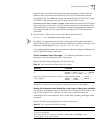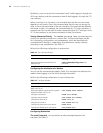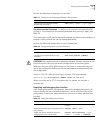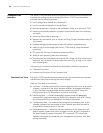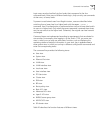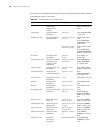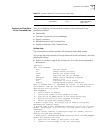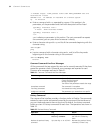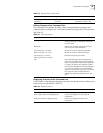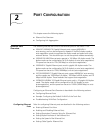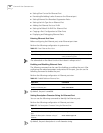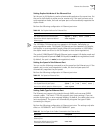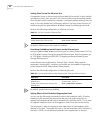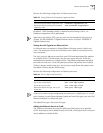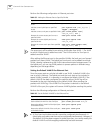
Command Line Interface 33
Editing Features of the Command Line
The command line interface provides a basic command editing function and
supports editing multiple lines. A command cannot be longer than 256 characters.
See
Table 23.
Displaying Features of the Command Line
If information to be displayed exceeds one screen, the pause function allows users
three choices, as described in
Table 24.
Retrieve the next history
command
Down cursor key <> or
<Ctrl+N>
Retrieves the next history
command, if there is any.
Table 23 Editing Functions
Key Function
Common keys Inserts at the cursor position and the cursor
moves to the right, if the edition buffer still
has free space.
Backspace Deletes the character preceding the cursor
and the cursor moves backward.
Left cursor key < or Ctrl+B Moves the cursor a character backward
Right cursor key > or Ctrl+F Moves the cursor a character forward
Up cursor key ^ or Ctrl+P
Down cursor key v or Ctrl+N
Retrieves the history command.
Tab Press Tab after typing the incomplete key
word and the system will execute the partial
help: If the key word matching the typed one
is unique, the system will replace the typed
one with the complete key word and display it
in a new line. If there is not a matched key
word or the matched key word is not unique,
the system will do no modification but
displays the originally typed word in a new
line.
Table 24 Display Functions
Key or Command Function
Press Ctrl+C when the display pauses Stop displaying and executing command.
Enter a space when the display pauses Continue to display the next screen of
information.
Press Enter when the display pauses Continue to display the next line of
information.
Table 22 Retrieve History Command
Operation Key Result



